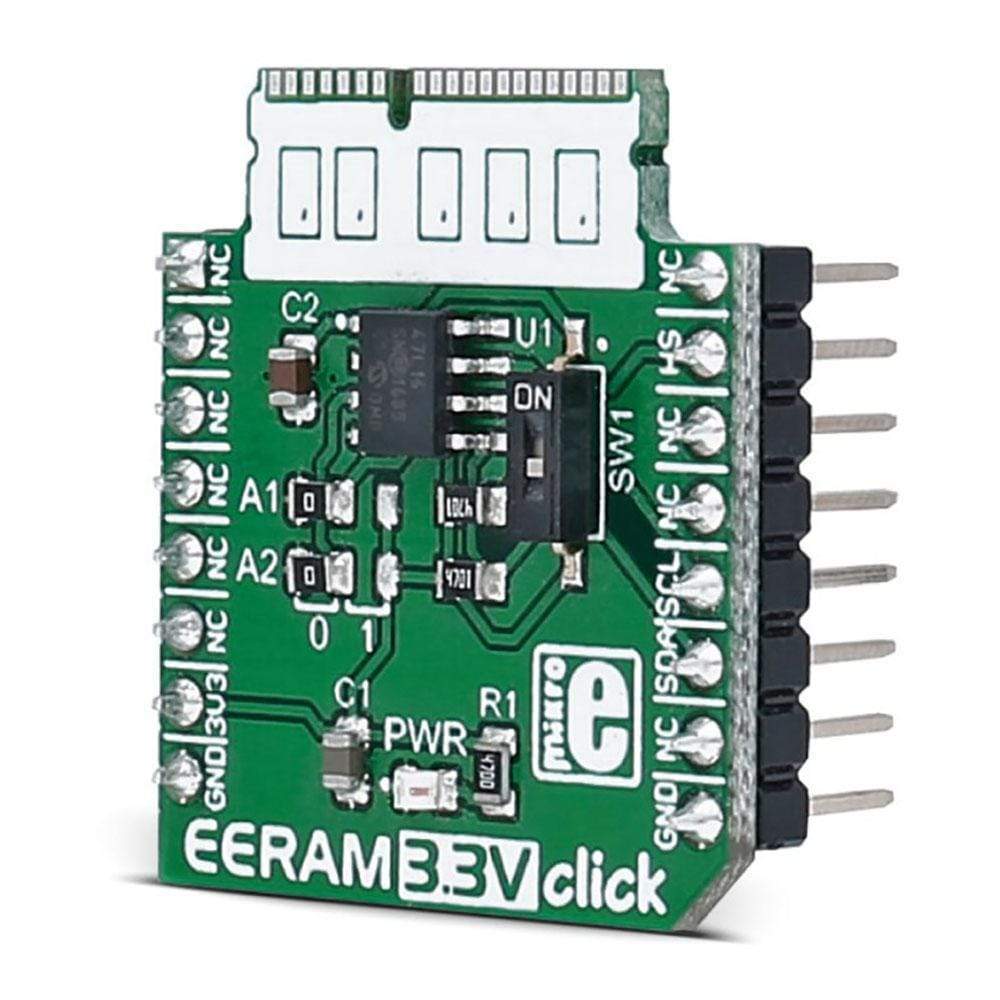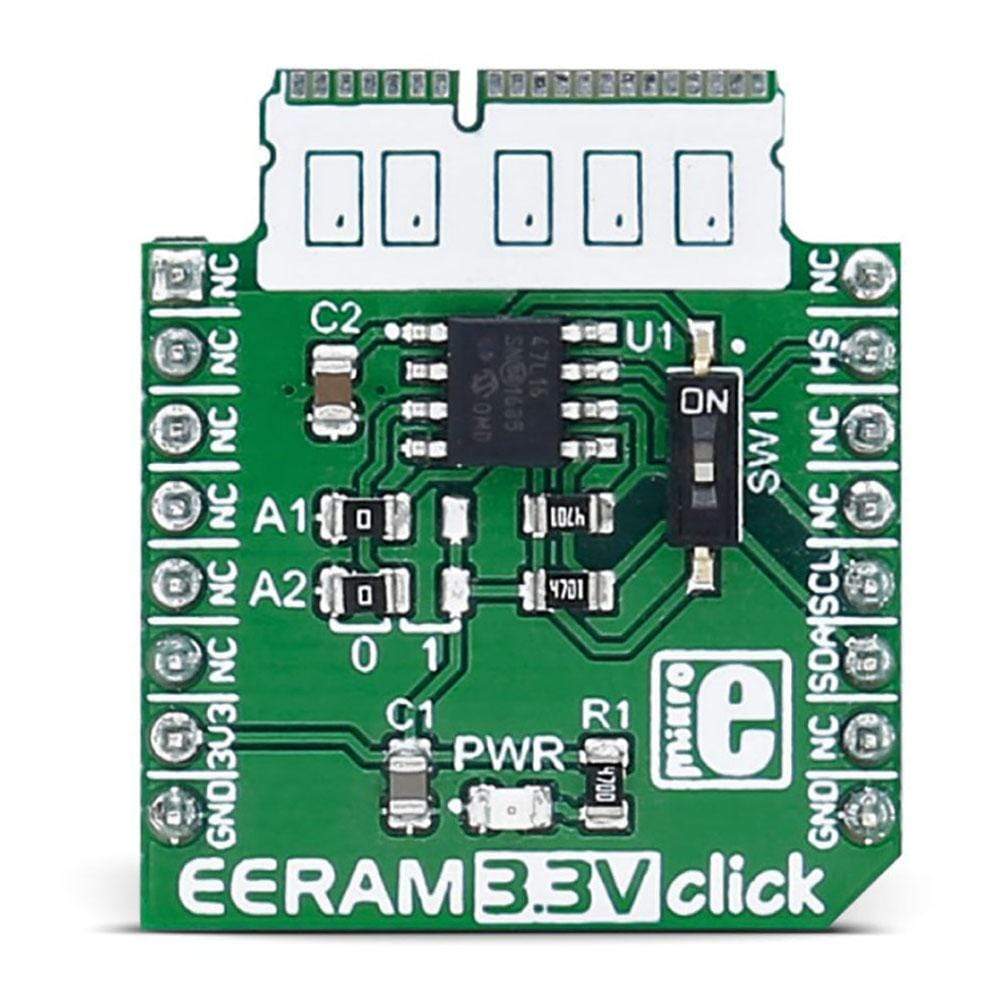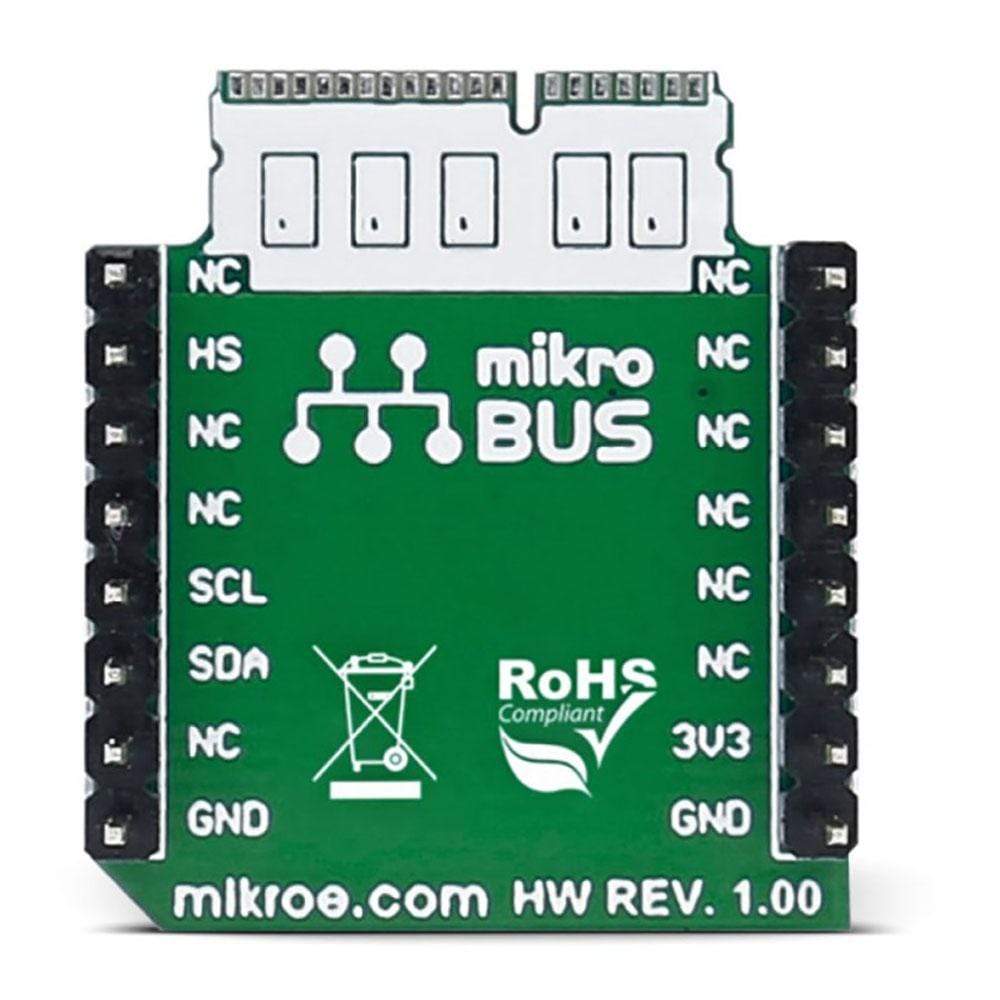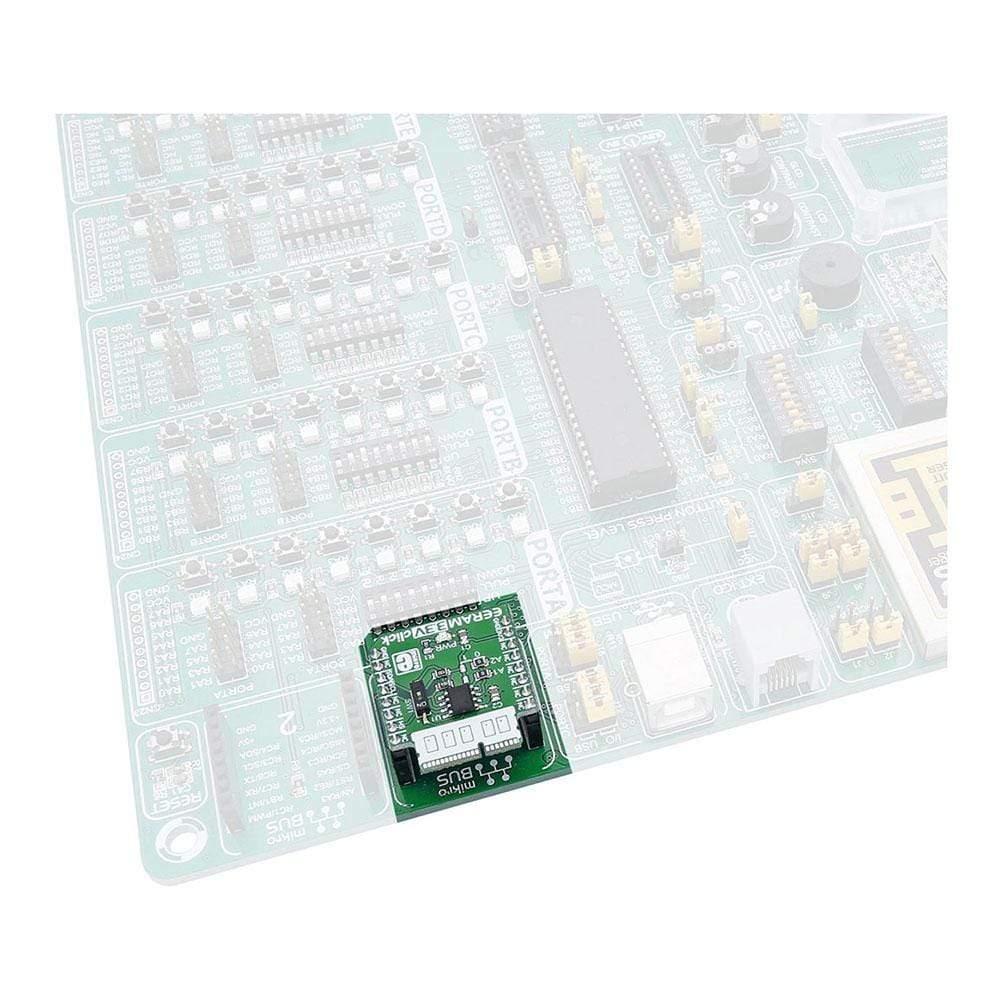



Overview
Add memory to your project with EERAM 3.3V Click Board™. It carries the 47L16 EERAM, a 16Kbit SRAM with EEPROM Backup from Microchip. The Click Board™ is designed to run on a 3.3V power supply. It communicates with the target microcontroller over I2C interface, with additional functionality provided by the INT pin on the MikroBUS line.
Downloads
Ajoutez de la mémoire à votre projet avec la carte Click Board™ EERAM 3,3 V. Elle embarque la EERAM 47L16, une SRAM 16 Kbit avec sauvegarde EEPROM de Microchip. La carte Click Board™ est conçue pour fonctionner sur une alimentation 3,3 V. Elle communique avec le microcontrôleur cible via l'interface I2C, avec des fonctionnalités supplémentaires fournies par la broche INT sur la ligne MikroBUS.
| General Information | |
|---|---|
Part Number (SKU) |
MIKROE-2728
|
Manufacturer |
|
| Physical and Mechanical | |
Weight |
0.018 kg
|
| Other | |
Country of Origin |
|
HS Code Customs Tariff code
|
|
EAN |
8606018711130
|
Warranty |
|
Frequently Asked Questions
Have a Question?
Be the first to ask a question about this.




